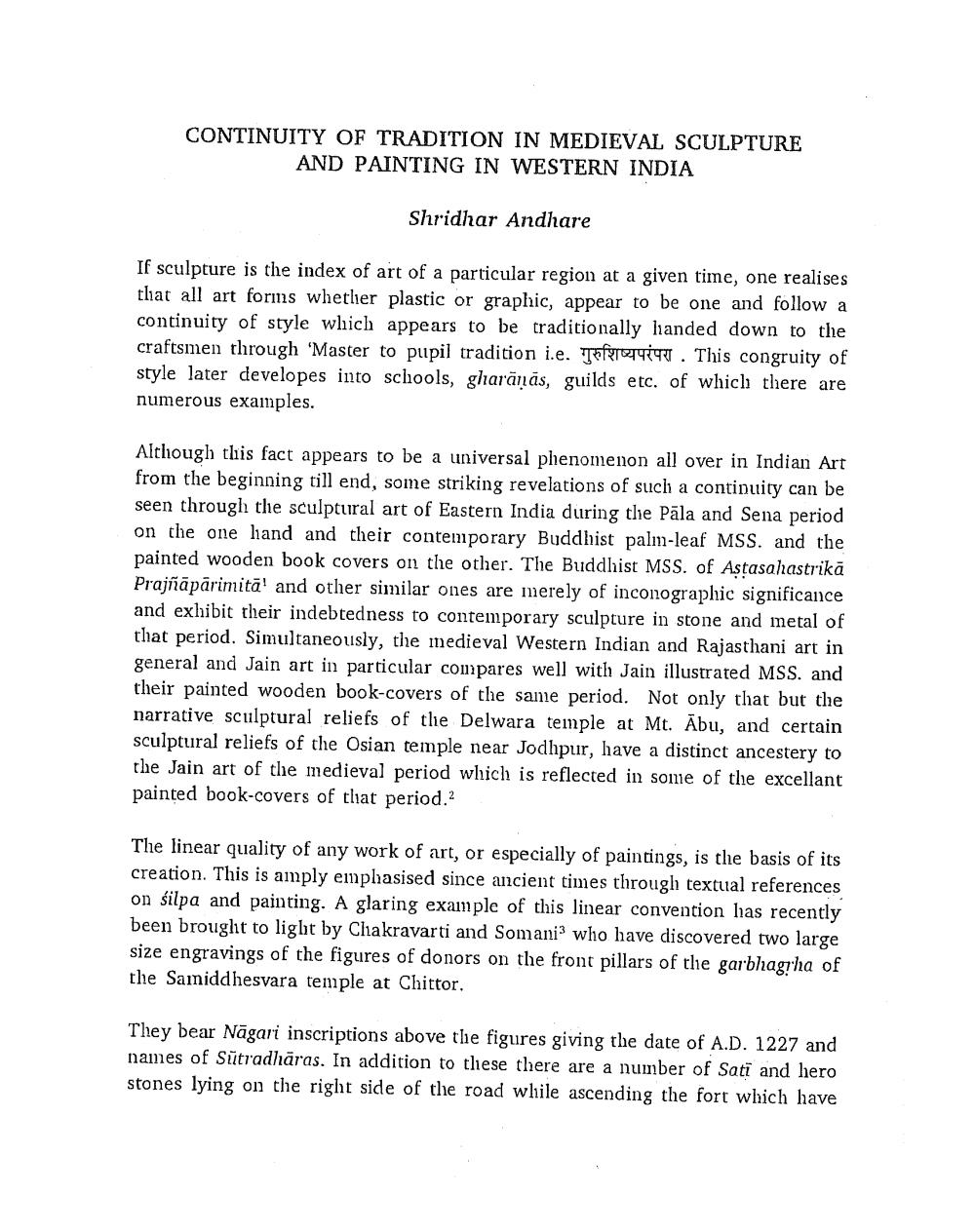________________
CONTINUITY OF TRADITION IN MEDIEVAL SCULPTURE
AND PAINTING IN WESTERN INDIA
Shridhar Andhare
If sculpture is the index of art of a particular region at a given time, one realises that all art forms whether plastic or graphic, appear to be one and follow a continuity of style which appears to be traditionally landed down to the craftsmen through 'Master to pupil tradition i.e. Tafgre . This congruity of style later developes into schools, gliarāņās, guilds etc. of which there are numerous examples.
Although this fact appears to be a universal phenomenon all over in Indian Art from the beginning till end, some striking revelations of such a continuity can be seen through the sculptural art of Eastern India during the Pāla and Sena period on the one hand and their contemporary Buddhist palm-leaf MSS. and the painted wooden book covers on the other. The Buddhist MSS. of Astasahastrikā Prajñāpārimitā' and other similar ones are merely of inconographic significance and exhibit their indebtedness to contemporary sculpture in stone and metal of that period. Simultaneously, the medieval Western Indian and Rajasthani art in general and Jain art in particular compares well with Jain illustrated MSS. and their painted wooden book-covers of the same period. Not only that but the narrative sculptural reliefs of the Delwara temple at Mt. Ābu, and certain sculptural reliefs of the Osian temple near Jodhpur, have a distinct ancestery to the Jain art of the medieval period which is reflected in some of the excellant painted book-covers of that period.2
The linear quality of any work of art, or especially of paintings, is the basis of its creation. This is amply emphasised since ancient times through textual references on silpa and painting. A glaring example of this linear convention has recently been brought to light by Chakravarti and Somani? who have discovered two large size engravings of the figures of donors on the front pillars of the garbhagyha of the Samiddhesvara temple at Chittor.
They bear Nāgari inscriptions above the figures giving the date of A.D. 1227 and names of Sütradhāras. In addition to tliese there are a number of Sati and hero stones lying on the right side of the road while ascending the fort which have




